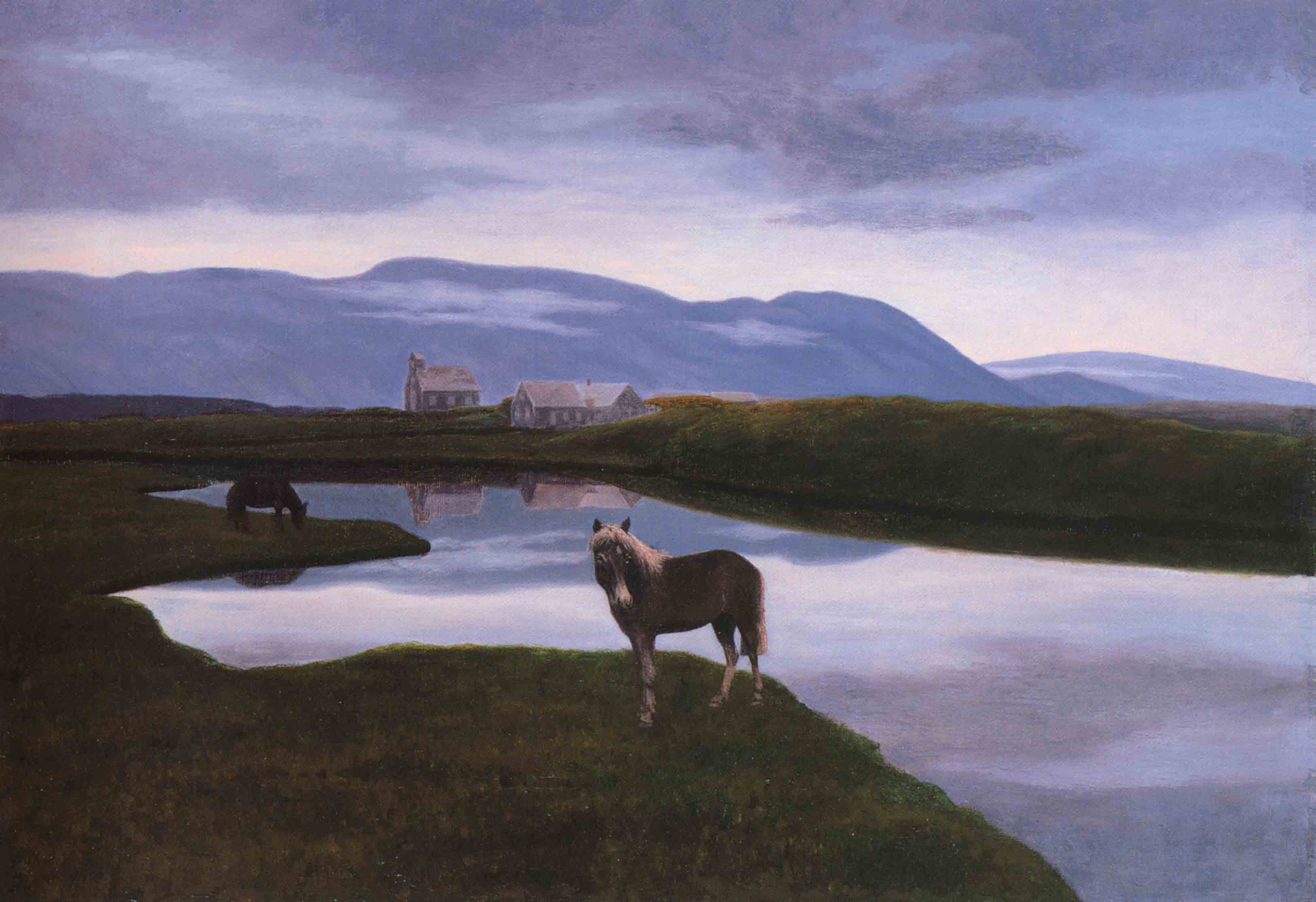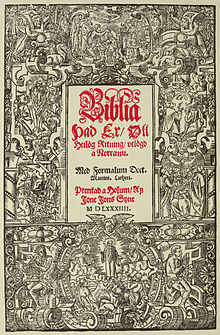Much of Icelandic
art, especially early Icelandic art, reflects their pristinely bleak landscape
and their mythology. Icelandic mythology is so closely related to Norse
mythology that it’s pretty much the only thing that comes up when you search
for it. Many of these gods and characters from Norse mythology are fairly well known:
Thor and his hammer (who is also the namesake of the word “Thursday”); Odin
with his one eye and pair of ravens who brings him information and gave the
world the runic alphabetic; Freyja, a sorceress who wears a feather cloak; Loki,
a shape-shifting trickster god; and many others. Many of these gods, demi-gods,
and stories are depicted in Iceland’s earliest art. It’s not a mythology I’m
too familiar with, but I find it fascinating. I think I’d really like to read
more about it next.
With a dichotomy of
mountains and volcanic lakes, it’s the perfect backdrop for landscape painting,
which is certainly a popular style. Iceland has some of the most remote land in
the world, much of it untouched by very few humans. There are many artists that
have emerged who tried to capture the beauty of this island country: Thórarinn Thorláksson, Ásgrímur Jónsson, Jóhannes
Kjarval, Jón Stefánsson, and Júlíana Sveinsdóttir. During the early days, many artists went to study in
Copenhagen and brought back their newly-acquired skills to Iceland.
 |
| by Thórarinn Thorláksson |
Following European
trends in the art world, some Icelandic artists began to delve into abstract
art during the mid-20th century. Other artists gravitated toward a variety of modern styles
such as cubism and fauvism. Of course, after a while, artists started to veer
back to figurative art. Svavar Guthnasson, Nína Tryggvadóttir, Gunnlaugur
Scheving, Louisa Matthíasdóttir, and Einar Hákonarson are some of the more
prominent artists of the 20th century.
 |
| I have no idea what this is, but it looks terrifying. (It might be a nightmare rendition of a walrus.) |
Early Icelandic
literature was closely related to Old Norse literature. In fact a lot of it was
written in Old Norse. Like much of the literature during this period, different
forms of poetry was pretty much the most prominent form of literature. In
Iceland, there were three main styles of poetry that emerged.
The Eddas were
important Scandinavian documents that were divided into two parts: the Poetic
Edda, which were a collection of poems and stories from about the 10th
century, and the Prose Edda, a collection of Norse mythological stories and
Icelandic poetry.
Skalds were
Icelandic poets who mainly wrote about kings and nobility. These poems were generally thought to
be historically accurate since no one at this time would ever think about
writing something untrue about their leader. (My, how things have changed,
haven’t they?)
 |
| After this guy gets done, he can go attack that "walrus" above. |
Sagas were long,
extended poems that told epic tales of Viking voyages, historical battles,
exploration, etc. Between the 9th and the 13th centuries,
these sagas were the main source of information regarding the history of this
area, even though sometimes the authors would add in some mythological features
into the storylines. However, I’m pretty sure that most people can figure out
that dragons don’t exist, so this part is clearly an embellishment. (Perhaps
Brian Williams and Bill O’Reilly could’ve learned this better.)
The first Bible
translation was completed during the 16th century, as was a
translation of John Milton’s “Paradise Lost” a couple centuries later. (I read “Paradise Lost” many years ago,
along with “Paradise Regained.” If you like long, epic poems steeped with deep
religious themes, then by all means, read it. I read both, crossed them off my
list, and moved on to books I enjoyed far more.) There was a rise in sacred poetry as well as rímur, which is
an epic poem that consists of rhymed alliterative verses of 2-4 stanzas.
Starting in the
1800s, Iceland saw a literary revival. Jónas Hallgrímsson was considered to be the
father of the short story in Iceland, and Jón Thoroddsen published the first
novel here in 1850. The romantic
period was popular in Iceland as it was in other areas of Europe, and it was
followed by realism and naturalism.
Einar Benedictson was a notable neo-romantic poet. However, many Icelandic writers began
writing in Danish during the 20th century including Halldór Laxness,
the recipient of the 1955 Nobel Prize in Literature. These days, crime novelist Arnaldur Indridason has reached international success with
his works. I do love a good crime
novel. I think I’m going to have to see if my library (or the Kindle store) has
any of his novels.
Up next: music and
dance



Norse mythology adnIcelandic mythology are the same. Most of norse/icelandic mytholigy was preserved in icelandic sagas and eddas, most notably Snorra edda.
ReplyDelete